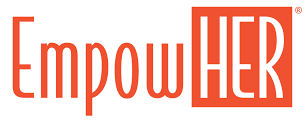Blog
Topics
POPULAR TAGS
Meditation and Children, Part 2: The First Progressive Relaxation Exercise
As promised in my recent blog post discussing the benefits of introducing children to meditation, here is a progressive relaxation exercise to share with your child regardless of his age and stage of development. In fact, feel free to join in and reap the benefits yourself.
This simple routine frees the body of all tension, from head to toe. It is very useful not only to start off meditation, but to help your child relax at any time, before a difficult task or test, and especially at night in order to fall asleep.
This progressive relaxation exercise will be used as part of many other activities I will describe in future blog posts. Much like the basic chicken stock recipe that forms the starting point for a variety of more complex soups, it is the first exercise that your child will do in order to prepare for many others.
How to begin this progressive relaxation exercise
* Ask your child to lie down with his hands resting by his sides, to close his eyes, and to think about how it feels to be in his body. This gives him a minute to quiet down. Next, say to your child “Listen to my voice and follow my instructions.”
* Now, “Squeeze your toes (by pointing your toes) – squeeze, squeeze, squeeze,” so he sustains the tensed muscles for a few seconds. Then instruct him to let go and relax.
* “Squeeze your calves (by flexing your feet) — squeeze, squeeze, squeeze. Then let go.”
* “Then squeeze your thighs — squeeze, squeeze, squeeze. Then let go.”
* “Squeeze your buttocks — squeeze, squeeze, squeeze. Then let go.”
* “Now, put your hands on your tummy and breathe in, so it fills up and gets very big – hold it, hold it, hold it. Now blow the air out – blow, blow, blow – and feel your tummy go down.” Note: with older children you can use more accurate words such as “abdomen” and “inhale” and “exhale.” But it is still useful to suggest holding the breath and blowing the air out on the exhale saying blow-blow-blow, so he is reminded to breathe in and out, deeply and slowly.
* “Next, put your hands on your rib cage, feel the air fill it up as you breathe in, and breathe out. Now put your arms back down by your sides, and then breathe in and out again… slowly in, slowly out… noticing that the air is cool on your in breath and warm on your out breath.
* “Now, feel your chest rise as you breathe the air in – hold, hold, hold – then let it go as you blow, blow, blow the breath out.”
* “Stretch your fingers out towards your toes – stretch, stretch, stretch. Then let go.”
* “Squeeze your fingers in a fist – squeeze, squeeze, squeeze. Then let your hands relax.”
* “Squeeze your arms (biceps) – squeeze, squeeze, squeeze. Then let go.”
* “Now lift your shoulders to your ears – squeeze, squeeze, squeeze. Then let go.”
* “Then move your head very gently from side to side, as if to nod YES, YES, YES, then NO, NO, NO. Then come back to stillness.”
* “Open your mouth as wide as you can – hold – then let go.”
* “Scrunch up your nose – hold – then let it go.”
* “Squeeze your eyes tightly – squeeze, squeeze, squeeze. Then let go.”
* “Squeeze your forehead – squeeze, squeeze, squeeze. Then let go.”
* LAST BODY CHECK: “Finally, lie still. Your whole body should feel relaxed. Check for tension by checking in with your body by asking “toes, are you relaxed?”, “fists, are you relaxed?”, “arms, are you relaxed?”, “shoulders, are you relaxed?”. If any muscle group still feels tense, go back and tend to it again. Then lie still, and enjoy the relaxation.”
I will continue on with the next progressive relaxation exercise in my next blog post. If you would like more resources to help guide you and your child through meditation, please visit my website, where you can download several audio recordings and read more articles about the benefits of meditation for children.





